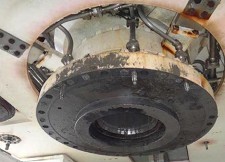Fastener Experts Address Hydrogen Embrittlement Claim
FEATURES
On December 18, 2012, a Chevron offshore oil rig’s lower marine riser package separated from the blowout preventer, releasing approximately 432 barrels of synthetic-based drilling fluids into the Gulf of Mexico.
Chevron told the Bureau of Safety and Environmental Enforcement (BSEE) that the incident was the result of the failure of H4 connector bolts manufactured by GE Oil and Gas (formerly Vetco-Gray).
Based on the initial failure analysis, GE sent replacement bolts for all known H4 connectors to customers worldwide.
The root cause of the 2012 disconnect was determined to be hydrogen-induced stress corrosion cracking (HiSCC), a finding verified in a BSEE report dated August 2014.
The occurrence of HiSCC is consistent with the facts in the case, fastener experts Joe Greenslade and Salim Brahimi told GlobalFastenerNews.com.
“On the other hand, there are inconsistencies in how the report defines HiSCC as the cause of the failures,” Greenslade and Brahimi noted in a joint statement to GlobalFastenerNews.com.
FIN subscribers can click here for the full story.
Related Stories:



There are no comments at the moment, do you want to add one?
Write a comment